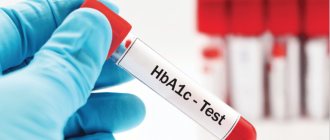ESR 20-30: what does it mean?
An increased erythrocyte sedimentation rate in women can be caused by several factors. The main ones in percentage terms in the table. It makes it possible to immediately narrow the range of possible diseases and immediately move on to therapeutic therapy.
| Causes of pathology | Percentage of all cases |
| Infectious lesions | 37% |
| Malignant manifestations | 23% |
| Connective tissue diseases | 15% |
| Pathologies of the kidneys and renal system | 5% |
| Other diseases | 16% |
| No pathology detected | 4% |
Among the main diagnoses that are most often made to women of different ages with an increased ESR are the following :
- tuberculosis lesions of pulmonary and extrapulmonary forms;
- development of foci of infection in the respiratory and urinary tract;
- viral hepatitis;
- fungal infections;
- The most common cancer diseases are leukemia, cervical, breast, kidney and ovarian cancer;
- rheumatoid lesions, including lupus erythematosus;
- glomerulonephritis and pyelonephritis;
- sinusitis, tonsillitis and allergic reactions;
- anemia and inflammatory processes in the pelvic organs ;
- gastritis and other mucosal lesions accompanied by inflammation.
In 4% of cases, the reasons for the increase in ESR are not identified. There are actually recorded cases where in women the rate was 100 mm/h, but the patient was absolutely healthy. This may be due to several factors. First of all, an excessive erythrocyte sedimentation rate can persist for up to several months due to a previous disease, it all depends on its complexity and the success of treatment.
Also, a false increase in ESR levels can be affected by taking oral contraceptives and indulging in foods that contribute to a jump in cholesterol in the blood. Often, an increase in the indicator to 20-30 mm/h provokes a large amount of vitamins, which contain vitamin A.
If the disease is suspected, the patient should also undergo a blood test to determine the level of leukocytes.
Erythrocyte sedimentation rate after 30 years
After 30 years, the normal level of erythrocyte sedimentation rate, which can be within 2-20 mm/h , should not change under the influence of external and internal factors. But due to possible disturbances in the functioning of the genitourinary system, which can be provoked by childbirth and sexually transmitted infections, the patient develops erosive inflammation of the mucous membrane. This will increase the ESR rate and require immediate treatment of diseases to prevent them from becoming chronic and malignant .
Kidney problems, which can also appear after 30 years, can cause pathology. The amount of hemoglobin in the blood necessarily requires monitoring, since with age its indicator falls, which can cause anemia .
After 60 years of age, women experience a natural increase in erythrocyte sedimentation rate, which is the result of gradual wear and tear of the kidneys, liver and death of red blood cells.
If an alarming result is received, a repeat analysis is taken after 4-6 days to see the growth of the indicator over time . When receiving another result above the norm, the woman is prescribed examination and treatment after the diagnosis has been clarified.
Increase in ROE
An increase in the erythrocyte sedimentation reaction is not always a sign of pathological phenomena in the body. Physiological processes can affect it:
- Intense physical activity that speeds up metabolism.
- A number of medications, in particular, contraceptives, dextrans drugs with high molecular weight.
- Diets in which the concentration of plasma proteins increases due to limited water intake. ESR also increases after a meal (up to 25 mm/hour), which is why blood is taken for analysis on an empty stomach.
An increase in the erythrocyte sedimentation rate also occurs in pathologies of various etiologies, among them:
- weakening of the body's defenses;
- development of the tumor process;
- formation of necrosis;
- destructive changes in connective tissue;
- foci of inflammation.
For a doctor, a prolonged increase in ROE in the blood up to 40 mm/hour in combination with other laboratory tests is of great diagnostic importance.
ESR during pregnancy
During pregnancy, there is a natural increase in the erythrocyte sedimentation rate, which is not accompanied by the presence of pathologies, infections or inflammations. From the 13th week of pregnancy, a woman can already experience an increase in ESR up to 25 mm/h, and by the end of the term the figure will approach 40 mm/h.
Despite the possibility of a natural increase in ESR during pregnancy, parallel tests should be performed to detect the level of white blood cells and protein . This is required to prevent kidney problems and a dangerous decrease in the amount of hemoglobin. Quite often, an increase in ESR during pregnancy occurs due to anemia, accumulation of salts in the kidneys and pyelonephritis.
Kidney diseases, accompanied by an erythrocyte sedimentation rate of 20-30 mm/h, can cause the development of gestosis, preeclampsia and eclampsia . In addition, this causes the accumulation of toxins and harmful substances in the mother’s body, which penetrate through the placenta to the child and can cause problems in its development.
During this period, we cannot exclude such problems as the development of cancer, inflammatory processes in the reproductive system , thrush and exacerbation of hidden infections. All these pathologies require treatment and cannot be ignored, since the mother’s illness has a detrimental effect on the child.
Regardless of whether the patient has reasons to worry and take an erythrocyte sedimentation rate test, it is worth regularly being examined by a doctor. Most diseases disappear without a trace with early diagnosis and timely treatment, including cancer and malignant neoplasms.
Decrease in ESR
A drop in ROE levels may be a sign of:
- heart pathologies;
- chronic lack of blood supply;
- dehydration;
- viral hepatitis or cirrhosis of the liver ();
- erythrocytosis - a reactive increase in the number of red blood cells;
- changes in hemoglobin structure ();
- sickle cell anemia, in which red blood cells are shaped like a sickle rather than biconcave discs, which reduces their sedimentation rate;
- high levels of albumin in the blood plasma, increasing its viscosity.
See also: The first symptoms of HIV in the early stages
A decrease in ESR is also observed with vomiting and diarrhea.
ROE changes differently at different stages of even one pathology:
- With tuberculosis, ROE may remain unchanged, except in advanced cases or until the disease is accompanied by a complication.
- The acute period of an infectious disease is accompanied by an increased ESR only from 2-3 days. At the same time, with a diagnosis of lobar pneumonia, the indicator remains high, even if the crisis has passed.
- At the beginning of acute appendicitis (), the laboratory test values remain unchanged.
- A slight increase in ROE is observed with active rheumatism, but its decrease may indicate acidosis or blood thickening.
- The subsiding infectious process is accompanied by normalization of the total number of leukocytes, ROE decreases later.
ROE in the blood: what is this indicator?
ROE is one of the indicators in a general blood test that helps detect diseases of an inflammatory, infectious and autoimmune nature. Determines the erythrocyte sedimentation rate. The analysis is nonspecific, so deviations from the norm are possible even in healthy people.
During the treatment of certain diseases, it allows you to evaluate the effectiveness of the therapy.
Your doctor may order this test:
- For diagnostics and preventive examinations.
- When identifying inflammatory, infectious and autoimmune diseases.
- Assessment of the quality of treatment provided.
- To identify oncological processes in the body.
The material for analysis is blood from a vein and from a finger. The most accurate result is obtained by the Westergren testing method, when blood is taken from a vein and a more accurate scale is used to evaluate the result. By itself, ROE analysis will not be able to identify a specific disease, but together with other studies it is of great help in making an accurate diagnosis.
Normal for women
The test is nonspecific and normal values are found in 95% of people. For an accurate diagnosis, it is used in conjunction with other indicators.
Roya's normal indicators are presented in the table:
| Age, years | Norm, mm/hour |
| Up to 13 | 43015 |
| Before 18 | 15-18 |
| Women | 42036 |
| After 50 | 15-20 |
According to sources of foreign literature, ROE is normal if it has indicators from 0-20 mm/hour. However, to accurately assess health, the doctor needs to know the woman’s age and the changes that occur in her body. If in children under 13 years of age the norm is a swarm indicator of 7-10, then during puberty it increases to 18 mm/hour.
In women, ROE should not exceed 15 mm/hour.
ESR in children
In children, fluctuations in ROE in one direction or another are not a sign of infection. You should be concerned at values exceeding 15 mm/hour. Values of 40 or more mm/hour accurately indicate a pathological process.
An increase in ESR in a child can be caused by: sore throat, flu, allergies, colds. Sometimes the reason may be a lack of vitamins in the baby's diet or that he is teething. But most often the ESR rate in children increases for the following physiological reasons:
- taking hormonal medications during lactation;
- anemia;
- vaccination;
- features of the diet of a nursing mother.
It is impossible to understand that the ESR is higher than normal without a special blood test. By elevated body temperature and tachycardia, one can only suspect an approaching infectious process, which is usually accompanied by altered hematological parameters.
After determining the type of pathology, appropriate treatment is prescribed, carried out under medical supervision with regular tests to determine the dynamics of the patient’s condition.
Normal for men
Normal Roe indicators in men are somewhat different from those found in women, although the study is carried out in a similar way. In this analysis, the man’s age and the presence of chronic diseases play an important role.
Normal indicators can be seen in the table:
| Age, years | Norm, mm/hour |
| Infants | 43011 |
| Before 18 | 42005 |
| From 18 to 45 | 42949 |
| Up to 60 | To 10 |
| After 60 | Up to 15 |
Ideally, when interpreting analyses, the swarm should be in the range of 1-10 mm/hour. With age, the rate increases slightly, so after 60 years it is up to 15 mm/hour. Unfortunately, during tests, normal ROE values are observed too rarely due to the presence of various chronic diseases and inflammatory processes in the body.
ROE norm by age
To understand in which direction the results of the study have changed, we focus on the norms of ROE in the blood, depending on gender and age.
Table 1A. Norm ROE depending on age.
| Age | ROE (mm/hour) |
| Infants up to one month old | 0—2 |
| Children under six months | 12—17 |
| Children over 6 months of age | 2—8 |
| Men under 60 years old | 1—8 |
| Men over 60 years old | less than 15 |
| Table 1B. Norm ROE in women by age. | |
| Teenage girls | 15—18 |
| Women under 50 years old | 2—12 |
| Second half of pregnancy | 40—50 |
| Women over 50 years old | less than 20 |
An analysis for ROE can be prescribed if there are female complaints:
- unexplained weight loss;
- anemia;
- pain in the pelvic area;
- headache;
- poor joint mobility.
See also: Lyapko applicator: benefits and harms, instructions for use
Increased ROE occurs during menstruation and pregnancy. In the postpartum period, the values of the diagnostic index are normalized.
If the norm in women is increased, further examination is necessary, since the properties of the blood change due to:
- decrease in albumin-globulin ratio;
- changes in blood plasma pH;
- saturation of red blood cells with respiratory protein.
Reasons for high ROE
An increased ROE does not always mean the presence of any pathologies in the body. If the indicators are elevated, it is necessary to exclude physiological causes of this phenomenon.
These include:
- Elderly age.
- Postpartum period.
- Menstruation.
- Puberty period.
- Pregnancy.
- State of stress.
- Taking estrogens and glucocorticoids.
About 5% of the world's inhabitants have abnormal ROE indicators from birth. Moreover, they do not have any chronic diseases or other pathologies that could contribute to this process. Why the analysis shows high numbers has not yet been established.
In other cases, it is important to contact your doctor, who will prescribe a number of additional tests for an accurate diagnosis.
An increased ROE is observed when:
- Inflammatory processes in the body.
- Infections.
- Serious lead or arsenic poisoning.
- After operations and other surgical interventions.
- With elevated cholesterol levels.
- Liver diseases.
- Anemia.
- Worm infestation.
- Significant blood loss.
- Hemolysis.
- Diabetes mellitus.
- Massive injuries and wounds.
- Hyperthyroidism or hypothyroidism.
- Kidney diseases.
Erythrocyte sedimentation
In most cases, ROE is increased in inflammatory and infectious pathologies. After competent antibacterial therapy, the indicator quickly returns to normal.
In such serious diseases as diabetes mellitus, anemia and hemolysis, ROE is increased over a long period, and is accompanied by a number of other unpleasant symptoms such as:
- Weaknesses.
- Loss of strength.
- Losing or, conversely, gaining weight.
High ROE is observed in diseases such as:
- Lupus erythematosus.
- Rheumatism.
- Arthritis.
- Dermatomyositis.
Pathologies associated with connective tissue and vasculitis are accompanied by long-term inflammatory processes. The analysis can be of high value over a long period of time. In this case, timely and competent treatment of the underlying disease is required.
Increased rates are observed in pathologies that cause tissue death. These include:
- Tuberculosis.
- Heart attack.
- Diseases with the formation of pus.
- Intestinal pathologies.
If the indicator is sharply increased to values from 60 to 80, then the presence of tumors can be suspected. At the initial stage of tuberculosis in an adult, the indicators may be slightly increased, but in the absence of treatment they rise to 90. With various infections, the ROE does not increase immediately, but after a few days.
A similar situation occurs with inflammation of the appendix. In a child, ROE is most often increased in inflammatory and infectious diseases.
ROE is always higher than normal in rheumatism and arthritis. During the last trimester of pregnancy, the ROE may exceed 40-50 mm/hour, which is normal. It may take several months for the number to return to normal.
A woman’s weight plays an important role in this: with low body weight, the indicator may not exceed 30, and with excess weight during pregnancy, it can reach 70.
When ESR decreases, several components of correct erythrocyte sedimentation are not in order
ROE values in oncology
If, over a long period, ROE indicators do not correspond to the norm, you should pay attention to this. The cause may be serious health problems. Elevated values indicate a latent course of cancer. A decrease in sedimentation rate indicates that the number of red cells in the blood increases. In turn, this triggers the oncological process in the blood, as well as an increase in leukocytes, which leads to leukocytosis.
Attention! Neither a decrease nor an increase in the rate of red blood cells is felt by a person. You need to focus either on laboratory indicators or other symptoms.
In oncological diseases, ROE can increase to 70 mm/h. The norm will depend on the stage of the disease and the presence of metastasis. Against this background, hemoglobin decreases and other indicators of the health of the female body deteriorate. Neither antibacterial nor antiviral therapy can change the results.
Reasons for low ROE
It is necessary to show concern not only with high, but also with too low indicators.
Most often this occurs when:
- Muscle dystrophy.
- Presence of nervous disorders.
- Jaundice.
- Hepatitis.
- Cholecystitis.
- Circulatory failure.
- Leukemia.
- Fasting.
- Heart failure.
- Vegetarianism.
- Taking steroid hormones.
- Treatment with non-steroidal anti-inflammatory drugs.
ROE below 2 mm/h may indicate the presence of serious diseases. If it is slightly reduced, then it is necessary to change the diet and add iron and protein to it. Very often, this situation occurs in women who have lost weight dramatically and adhered to strict diets.
A decrease in erythrocyte sedimentation rate is extremely rare.
Increased swelling does not always mean that a person is sick and an inflammatory process is occurring in his body. In order to accurately decipher the analysis and understand why the ROE indicator is increased, you need to visit a specialist. Only with the help of additional tests and studies can an accurate diagnosis be made and the correct treatment prescribed.
ROE during pregnancy
During pregnancy, the erythrocyte sedimentation rate usually increases due to natural causes. If in a normal state the boundaries of the normal indicator are within the range of 2-15 mm/h, then with each month of pregnancy the norm for a woman will expand and can double.
If the patient begins to experience symptoms such as a sore throat, nose, or mouth, a significant increase in white blood cell counts , or pain in some part of the body, you should immediately consult a therapist or gynecologist. There is a high probability of developing acute respiratory disease, damage to the body by virus and bacteria.
If timely treatment is not started in this case, the fetus may develop problems inside the womb. He may begin to suffer from a lack of beneficial microelements, vitamins, oxygen and other substances. In severe cases intrauterine infection occurs , which can even cause fetal death.
After 30 years: norm and reasons for increase
After 30 years, the erythrocyte sedimentation reaction rate should not change; it remains within the accepted limits of 2-15 mm/h. But after turning thirty, a woman’s ROE may increase to 33 mm/h due to possible problems with the reproductive system after childbirth . With this indicator, the patient may have absolutely no problems, but previously healed erosion and hidden infections will not allow the RER to return to normal.
In order to completely improve her health, in this case, the woman is recommended to undergo a full examination, have an MRI, and undergo smears for hidden infections. Also, errors in nutrition and dieting after 30 years have a detrimental effect on the erythrocyte sedimentation reaction. With this lifestyle, the figure can also increase to 25-33 mm/h.
Reasons for elevated levels
There may be several reasons for the increased erythrocyte sedimentation reaction, as can be seen from the information presented above. This condition can be caused by:
- development of sinusitis or tonsillitis;
- the presence of sexually transmitted infections and helminths in the body;
- purulent formations of internal organs and skin;
- any form of tuberculosis and in any location of the body;
- the development of bacterial infections, which may be accompanied by diarrhea, vomiting and other unpleasant symptoms;
- the formation of a viral infection, including herpes, chickenpox and other diseases;
- anemia and its accompanying symptoms;
- inflammatory process in the reproductive and reproductive systems;
- inflammatory diseases of joints and bones;
- diseases of the gastrointestinal tract system;
- development of dental caries;
- inflammatory process of the heart muscle, which can even lead to a heart attack;
- diseases of the organs and respiratory system.
In the absence of diseases and pathological processes, ROE may increase due to lack of normal nutrition , increased body weight, childhood, the patient's age after 65 years, the period of gestation and breastfeeding. Only the attending physician can identify the exact cause of a disorder in the body after an in-person examination and all tests.
If for some reason you received a bad general blood test, you should take it again. Only with additional diagnostics can any treatment begin.
Reasons for increased ROE

Promotions may vary. Doctors rarely pay attention to a minor jump, because the reasons that caused it are most often insignificant. High numbers should be cause for concern. They can be called:
- pregnancy;
- menstrual irregularities;
- anemia;
- tuberculosis and other infectious diseases, including fungal infections;
- heart attack;
- necrosis, destruction of connective tissue;
- systemic and autoimmune diseases;
- diabetes;
- oncology;
- liver diseases;
- problems with the thyroid gland;
- fractures, cracks;
- rheumatism.
High values can be detected in cases of appendicitis, menstrual irregularities, in the postpartum period, and during lactation. Any inflammatory processes also lead to an increase. Seasonal viruses that weaken the immune system are also very dangerous to health.









